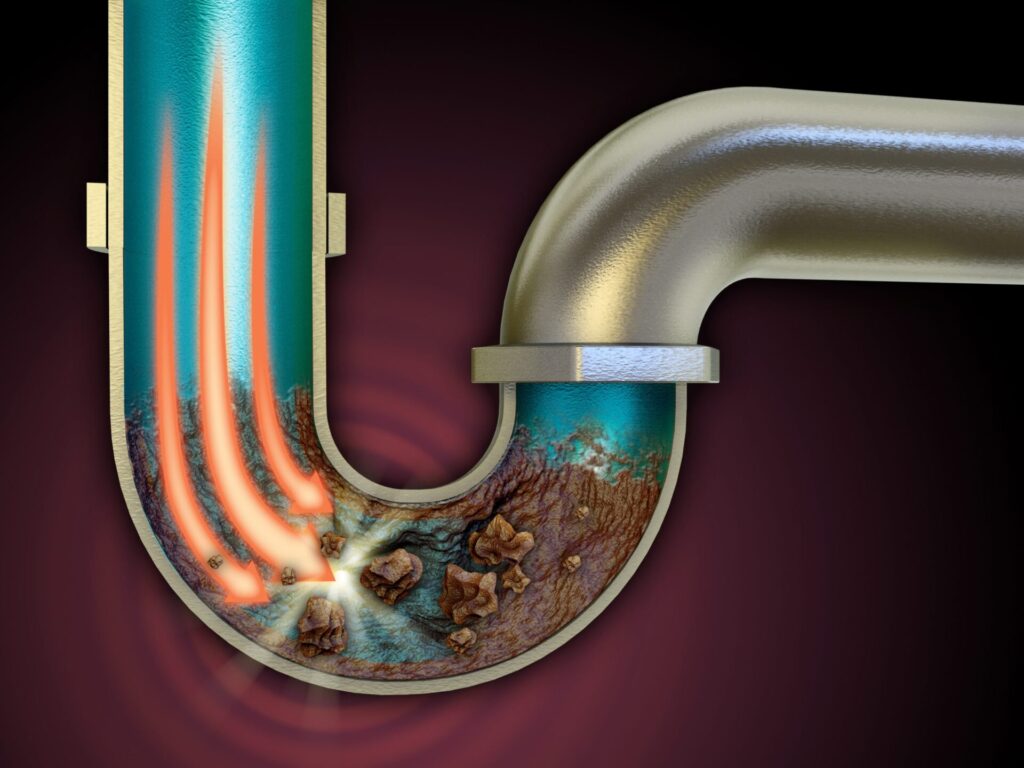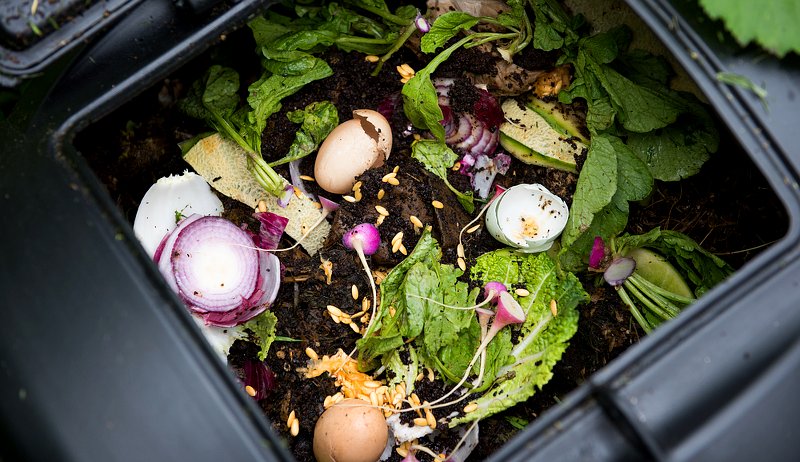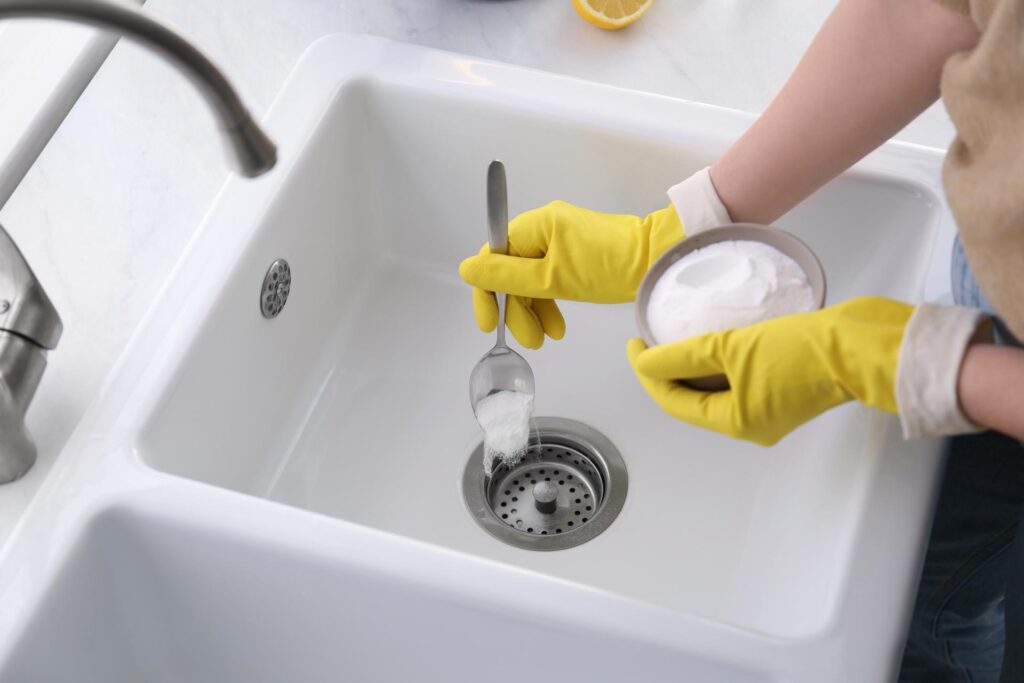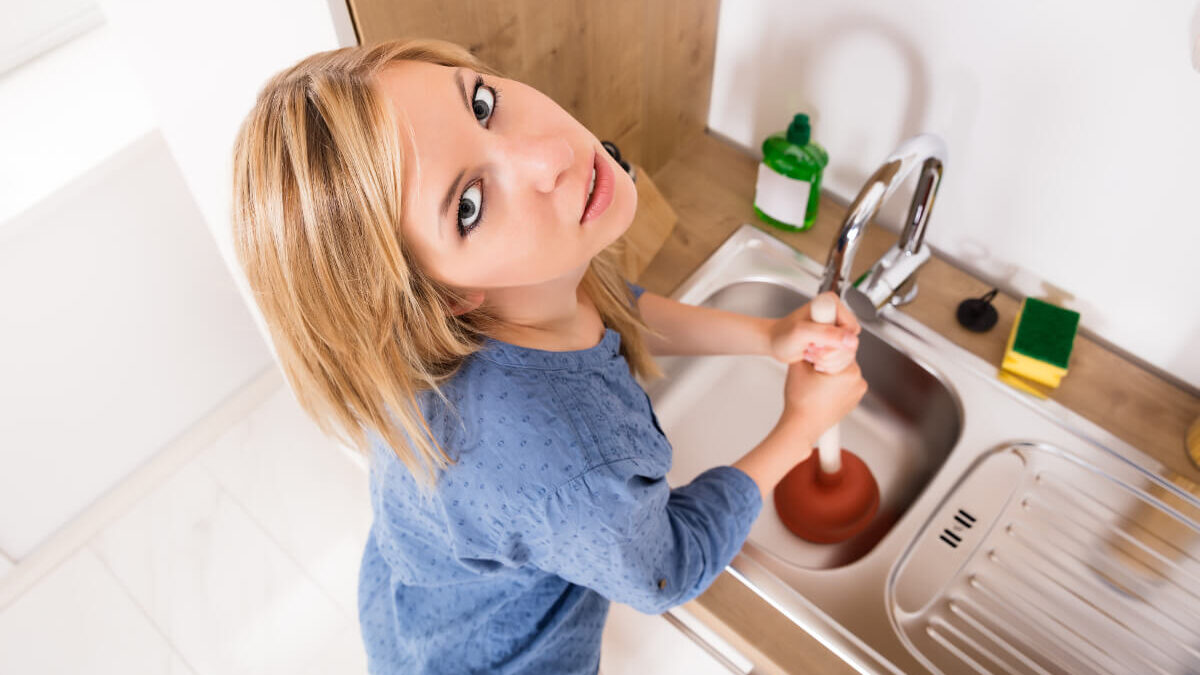A clogged-up sink is a great way of putting a halt to or slowing down your daily routine in the kitchen. While it can be frustrating, there is no need to call the plumber each time it occurs. In fact, there are a few things you can do to fix your own clogged kitchen sink and prevent future ones.
What causes clogs?

A clogged sink is caused by the accumulation of all the unwanted scraps and other materials disposed of in the sink. These waste materials buildup over time, usually in the trap section or entrance of the plumbing thus restricting the proper flow.
Ways to prevent buildups:
Do not pour oil down your sink – One of the main properties most oils have in common is that they solidify and clump up together when cool. Besides clumping up, oils tend to stick to other materials.
In the event that you accidentally flush oil down, pour a little bit of dishwashing liquid into your sink and run hot water to flush it. If you do not have hot water, a pot of boiling water will do the trick.

No kitchen scraps. Unless you have a garbage disposal, you should avoid putting any kind of kitchen scraps down your drains. Some materials such as eggshells, and coffee grounds, can be composted.
On the other hand, if you are not a fan of composting trash might be your only option. In this case place scraps in a sealed bag, and store in the freezer until garbage day to avoid odors.
Use a mesh strainer. A strainer is a simple, yet effective way of preventing larger objects from going down your sink. Stainless mesh strainers are a great option. The openings are small enough to catch smaller objects while still allowing the proper flow of water.
Flush with hot water. Regular flushing with hot water is another good way to remove any accumulation that may cause a clog. Run hot water down the sink after each use or at least once a week to flush excess materials.
Unclogging buildups
If your sink is filled with water you will need to tackle the clog directly. While you might be tempted, you should avoid using chemical products as a solution. They rarely work for extensive clogged and may cause damage to your existing plumbing.

- For smaller clogs running hot water with a combination of vinegar and baking soda will do the trick. They are many variations of this method available online.
- Drain Snakes or plungers are two good options when tackling clogs or at least improving flow. However, their effectiveness will depend on the extent of the clog.
- Cleaning the trap in many extensive cases might be the best way to tackle the problem directly. This method is time-consuming and requires a bit of hands-on disassembling. Start off by placing an empty bucket under the trap. Disassemble the p-trap section while paying attention to the order in which the parts are taking off. Clean any buildup inside and rinse out. Inspect and clean other sections of the pipe where the trap connects. Reassemble in reverse order and run water to make sure they are no leaks. Lastly, run some more water(hot) for about a minute.
Conclusion
Practicing some of these suggested maintenance tips can help you avoid any clogs, and in some cases solve any present problems. On the other hand, If you have reached the point where your sink is heavily clogged, it might be a good idea to consider hiring a plumbing contractor.

